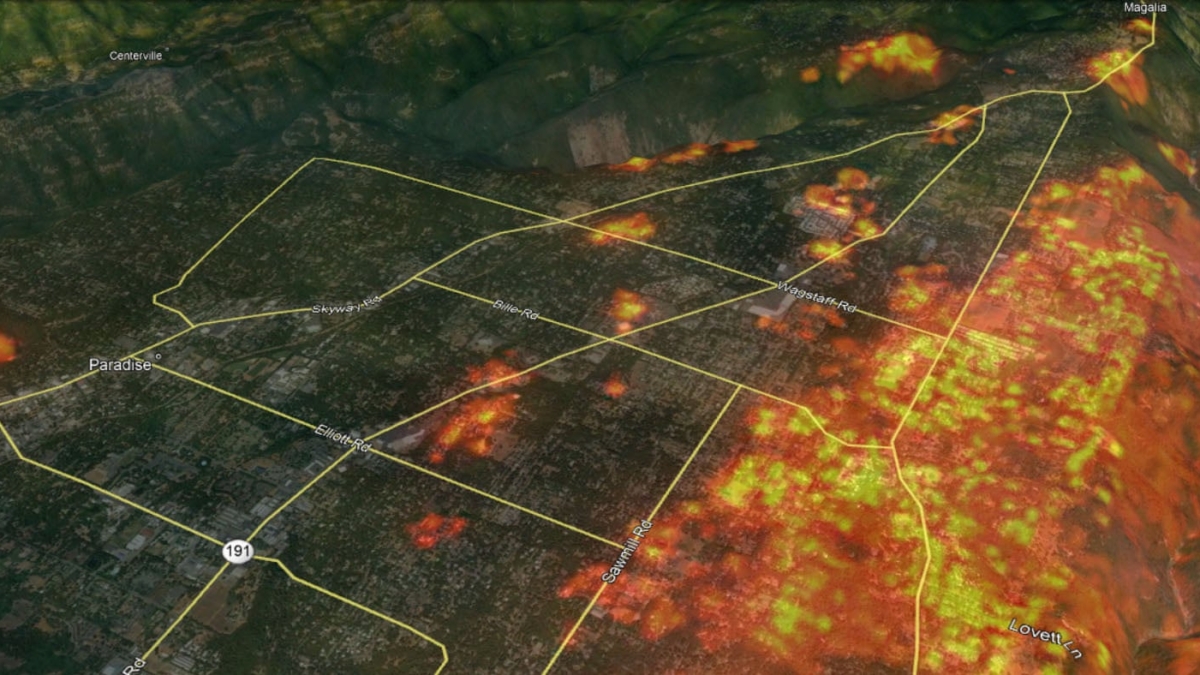Fear of widespread hunger after Pakistan floods wreck crops – Dengue surges, hospitals overwhelmed by sheer number of patients – “These rains have destroyed everything for us. We don’t even have anything to eat.”
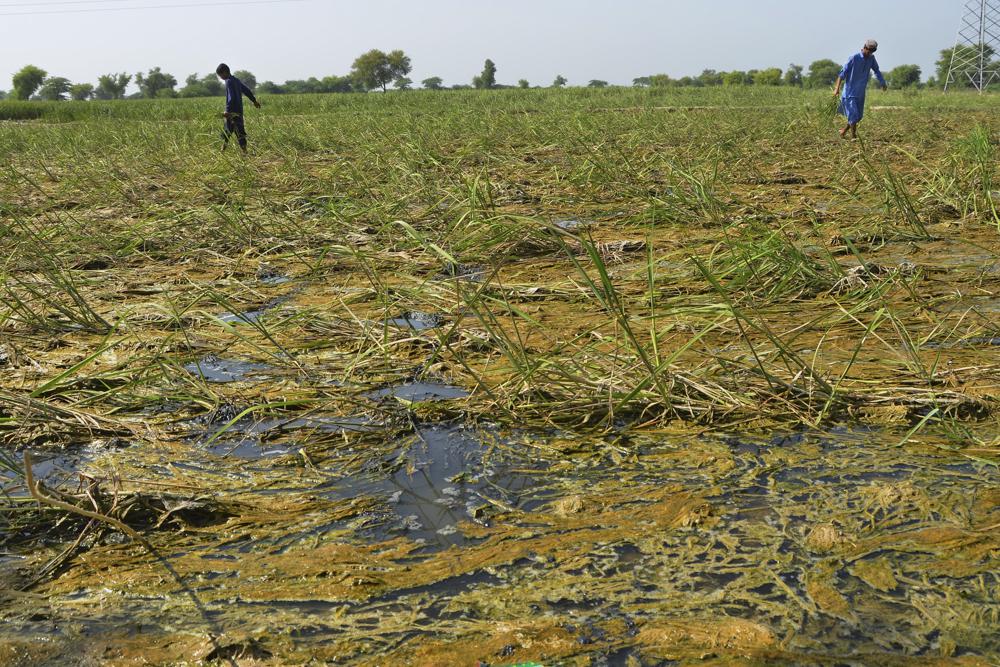
27 September 2022 (Grain Brokers Australia) – A food crisis of epic proportions is brewing in Pakistan due to torrential rains and catastrophic flooding in late August and early September. Less than 40 per cent of Pakistan’s land area is arable, yet around one-third of the country’s land mass was submerged, demonstrating the sheer scale of the recent flood event. More than 3 million hectares of crops have been lost or damaged, and as many as 33 million citizens, or 13 percent of the population, have been displaced and are scrambling to survive.
However, Pakistan was already facing huge economic and food challenges before the flooding due to grain shortages and soaring crude oil prices, primarily sparked by Russia’s invasion of Ukraine in February and the devastating war that ensued. Annual food inflation was running at 26 percent before the floods, and the cost of any food that survived the disaster has skyrocketed.
Rainfall during Pakistan’s monsoon season generally peaks in August, but the rains came early this year. July rainfall alone exceeded the total average annual monsoon rainfall by about 26 percent, becoming the wettest July since 1961. The provinces of Sindh and Balochistan received more than five times their 30-year average in July. Pakistan as a whole received 190 percent of its average rainfall for the three months to the end of August.
The soil profile across most of the country was saturated when the big storms hit in August, and the resultant tsunami of runoff led to a wave of floodwater that destroyed almost everything in its path. At least 1 million homes have sustained some level of damage, communication networks are down, and around 5500 roads, bridges and shops have been damaged since the flooding began.
Researchers are saying that the La Niña weather pattern, the third in a row, may be partly to blame for this season’s extraordinarily wet monsoon. The cooler water temperatures in the equatorial Pacific Ocean that characterise La Niña weather push the atmospheric loop known as the Walker Circulation into overdrive, boosting monsoonal rainfall in Southern Asia. A La Niña was also present during Pakistan’s last catastrophic monsoon season in 2010.

Economic driver
Agriculture is critical to Pakistan’s economy, contributing 22.7 percent of gross domestic product in the 2021-22 financial year. It is the country’s largest source of foreign exchange earnings. According to initial government estimates, 65 percent of Pakistan’s main food crops, including 70 percent of its rice, has been damaged or swept away during the floods. Around 3 million head of livestock have died. Pakistan’s planning minister says 45 percent of agricultural land is now destroyed.
At least 2 million tonnes (Mt) of wheat stored at government warehouses in the province of Sindh has been spoiled or completely ruined due to the rains and floods. Some wheat storages had as much as 2 metres of water through them, and it could take weeks for the water to recede completely. The loss of cotton crops has been estimated at US$2.6 billion, and analysts believe that Pakistan’s textile and sugar exports could drop by as much as $1B.
Pakistan is the world’s fourth-largest rice exporter behind India, Thailand and Vietnam, with buyers from China to sub-Saharan Africa. According to the nation’s bureau of statistics, Pakistan exported a record $2.5B worth of rice during the 2021-22 fiscal year. Any dramatic drop in exports will only add to global food insecurity fuelled by the ongoing war in Ukraine.
But the flooding has put a big dent in the harvested area, particularly in the flood-stricken Sindh province which accounts for 42 percent of the nation’s rice production. Assessments in Sindh estimate that 1.9Mt of rice has been lost in the floods, equivalent to 80 percent of expected rice production in the province.
India accounts for around 40 percent of global rice shipments, and recently announced restrictions on rice exports in a bid to control domestic prices but has added to international supply concerns. The Indian Government has banned shipments of broken rice, generally used in stockfeed, and slapped a 20 percent export tax on several highly sought food varieties, commencing on September 9.
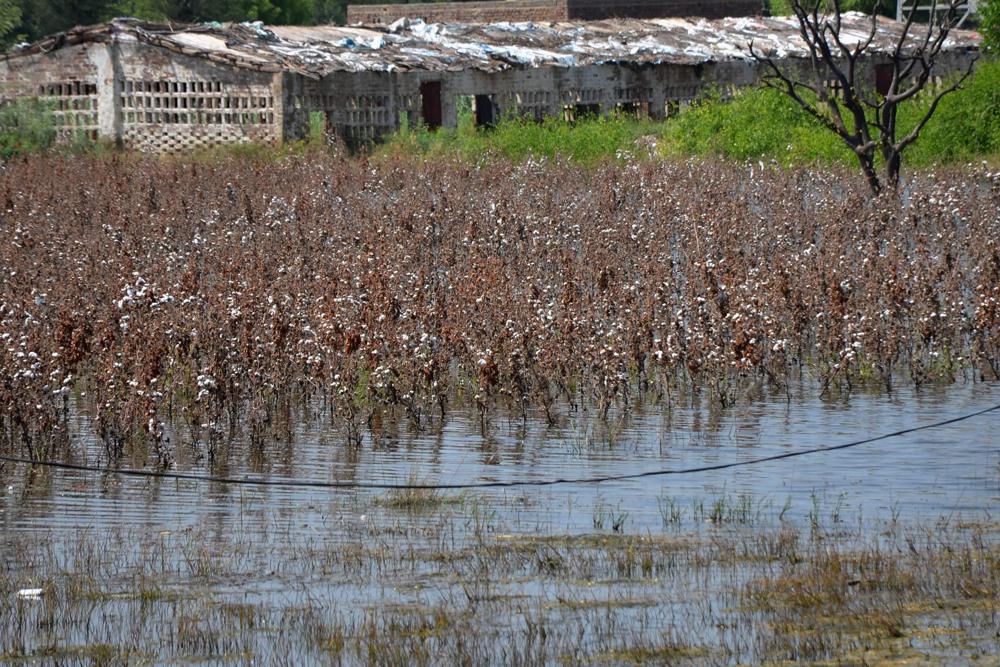
Outlook jeopardy
Fears are now growing for the next wheat crop, with the planting window for the 2023-24 season (May-April) fast approaching. Wheat is a food staple in Pakistan, with more than 90 percent of households consuming wheat daily, contributing 72 percent of caloric intake. But with so much land destroyed or damaged, and prospective wheat fields across the country still inundated, next season’s crop is in serious jeopardy. Farmers in many areas fear their land won’t be usable within the next three months, by which time it will be too late to plant the crop.
Pakistan is the third-biggest wheat producer in Asia, with the crop planted from October through to early December. The harvest normally commences in April and concludes in early June, before the monsoon rains arrive. The 2022-23 crop suffered two catastrophic weather events. First, it was drought, particularly in Sindh province, and then the monsoon rains hit the last of the harvest. The USDA’s latest 2022/23 wheat production forecast is 26.4Mt, around 1Mt lower than the previous season’s record crop.
Lower wheat and rice supply means that Pakistan will have to import more food, raising costs and worsening the country’s foreign reserves and balance of payments crisis. The latest USDA Foreign Agricultural Service forecast puts 2022-23 season wheat imports at 2.5Mt, up from 2.2Mt in 2021/22. However, this was before the devastating flood crisis, and this number is expected to increase sharply. In an ominous sign of things to come, a government agency issued a 300,000t wheat tender on September 20 for October shipment.
If the flood waters recede soon enough, Pakistan can still avoid a worst-case scenario, salvaging some food reserves and agricultural land. Punjab province, which grows a significant proportion of Pakistan’s wheat and rice, was spared the worst of the flooding. But given the sheer scale of the disaster, it will take years to rebuild and rehabilitate the flood-hit regions, which will lead to food shortages, and an enormous financial burden on the struggling economy.
Pakistan’s flood crisis becomes a food nightmare

Dengue surges in waterlogged Pakistan in wake of floods
By Zofeen Ebrahim, Farahnaz Zahidi
27 September 2022
(The Third Pole) – “I wouldn’t wish dengue on my enemies,” said Kiran Akif. News of a dengue outbreak earlier this month brought back memories of her illness from the potentially fatal, mosquito-borne disease in October last year.
The 43-year-old administrator of a private school in Lahore, spoke with concern as she thought of the devastation dengue could wreak in parts of Pakistan that are still inundated with floodwater.
“The fact that thousands upon thousands of displaced people in our country are sleeping under the open sky, near huge swathes of stagnant water, is frightening,” Akif said.
The worst floods in more than a decade have displaced more than 33 million people in Pakistan since mid-June. Over 1,500 people have been killed and more than 12,800 injured, according to the National Disaster Management Authority.
The southern provinces of Sindh and Balochistan were the worst affected by flooding. Both experienced the wettest August on record, receiving seven and eight times their usual monthly rainfall, respectively; a study released last week said that climate change could have increased the most intense rainfall by 50 per cent.
The deluge left behind large areas of standing water: in August, 37 per cent of cropland in Sindh was inundated, according to the United Nations’ Food and Agriculture Organisation. In Khyber Pakhtunkhwa, 16 per cent of cropland was affected; 15 per cent in Balochistan; and 9 per cent in Punjab.
This standing floodwater provides a large area for mosquitoes to breed, leading to the spread of diseases like malaria and dengue.
Naseem Salahuddin, an infectious diseases specialist working at The Indus Hospital, a charitable hospital in Sindh’s capital, Karachi, said she was “overwhelmed” by the “sheer number of patients” coming to the hospital with dengue.
“My colleagues at government facilities and even private ones are referring patients out as they don’t have enough beds,” she said. “Dengue seems to have replaced Covid-19.”
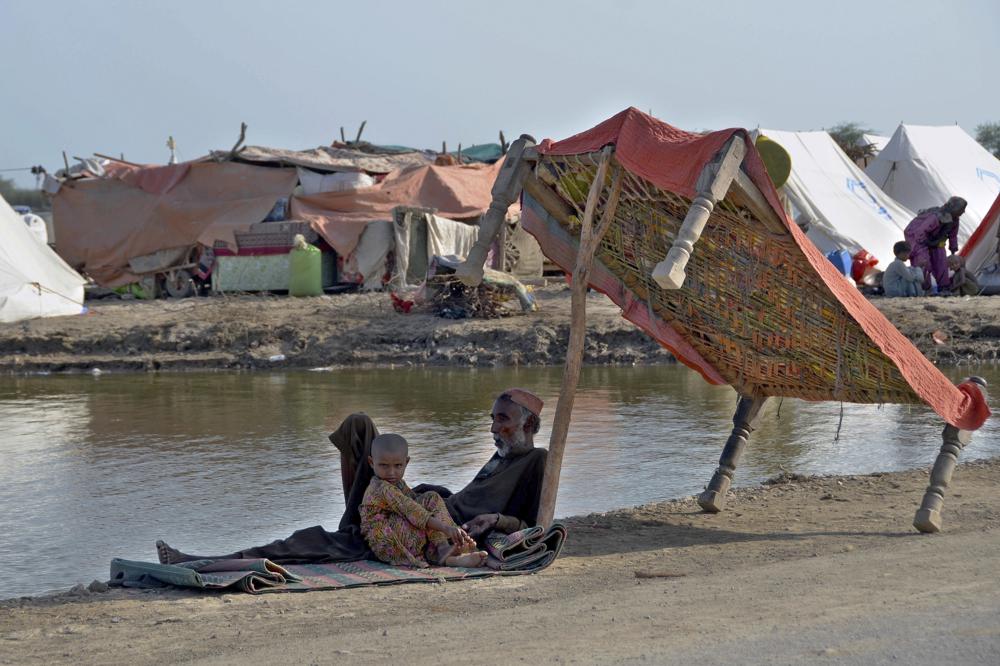
Symptoms rife, but tests and treatment in short supply
In most people, the dengue virus causes an acute flu-like illness, but it can develop into severe dengue with potentially lethal complications.
Salahuddin said she was especially worried about the over 650,000 pregnant women in flood-affected areas across Pakistan. About 73,000 of them are due to give birth in September, according to the United Nations Population Fund.
“It’s going to be a losing battle,” she said. “Both mother and child may die if they remain undiagnosed [for dengue or malaria] and, therefore, untreated,” said Salahuddin, explaining that the diseases can cause women to miscarry or give birth prematurely.
Humaira Bachal, founder of Roshan Pakistan Academy, a charity that provides education and healthcare, has been providing frontline relief since the floods began. She said she and her team had “confirmed dengue cases” after testing displaced people in a camp on the outskirts of Karachi.
But, she added, in rural areas, especially in Sindh, children have skin infections so bad that the skin is “peeling off” on their heads and feet, and “gastroenteritis is causing deaths”. The scale of these multiple healthcare crises means health workers have neither the time nor the means to check people for dengue.
“We just give them basic treatment to save their lives,” said Bachal.
Fever is common among those affected by the floods, Bachal said, but there is no way to confirm if people have dengue. The organisations Bachal has come across have not had dengue test kits.
In early September, Zunera Zulfiqar, a paediatrician at the Sindh Institute of Urology and Transplantation (SIUT) was working at SIUT’s medical camp for flood victims in the coastal district of Lasbela, Balochistan (near Karachi). While she said she did see dengue test kits being used, “There were too many patients with clear symptoms of dengue, also called ‘breakbone fever’, as it presents as typical severe body ache, headaches, fever and vomiting. Symptoms of malaria are not exactly the same.” […]

Authorities unprepared for dengue outbreak
Although dengue is common across Pakistan after the monsoon rains, health experts said the Pakistani government seems to be taken by surprise every year.
“They are never prepared and turn to fire-fighting when things get out of control,” said Qaisar Sajjad, secretary-general of the Pakistan Medical Association. […]
Bachal, the frontline health worker, described the severity of the situation in Sindh: “If you put up a mosquito net at night in any flood-affected area, by morning you will see the net covered with mosquitoes.” Due to a scarcity of nets, she said, many people use them to protect their livestock that survived the floods and instead cover themselves with cloth.
Abdul Ghafoor Shoro, general secretary of the PMA’s Karachi division, said the PMA’s teams found people sleeping in the open in flood-affected areas, without mosquito nets. “The government has received thousands of them [nets] in aid; where are they?”
In the absence of testing kits, Bahoto of Health Services Sindh insisted that healthcare workers “can make a fairly good diagnosis based on the history from patients” and that most often people are not suffering from dengue. Last week, the World Health Organisation handed over 42,000 and 13,500 rapid diagnostic kits for dengue and malaria respectively. Now, Bahoto assured The Third Pole, the testing can be done accurately.
Shoro remained unconvinced, and said he saw “little seriousness” in the handling of the disease. “It [the government] uses fancy words but there is little action on ground.”
As of 21 September, 27 deaths due to dengue in Sindh have been officially reported. Independent health experts told newspaper Dawn that the real numbers are likely much higher, given the lack of testing in flood-affected areas. [more]
Dengue surges in waterlogged Pakistan in wake of floods

Pakistan floods raise fears of hunger after crops wrecked
By Munir Ahmed and Muhammad Farooq
26 September 2022
KHAIRPUR, Pakistan (AP) — Like every year, Arz Mohammed had planted his little patch of land in southern Pakistan with cotton. The crop would earn him enough so that, as he puts it, his family of five wouldn’t be reduced to begging. Then came the deluge.
Pakistan’s massive floods this summer collapsed Mohammed’s home and destroyed his four acres of cotton, wiping out most of his income.
On top of that, his land and that of his neighbors remain underwater, three months after the heaviest rains stopped. Like many farmers across southern Pakistan, he may not be able to plant his next crop — wheat — in time.
That could spell trouble for the country’s food supply.
“These rains have destroyed everything for us,” said Mohammed, who lives in a tent with his wife and children near his wrecked house in Khairpur, one of the country’s hardest-hit districts. “We don’t even have anything to eat.”
This summer’s flooding, caused by monsoon rains nearly triple the usual ferocity, wiped out huge swaths of crops, leaving already impoverished families struggling to obtain food. Farmers and officials warn that Pakistan could now face serious food shortages at a time when the government is strapped for cash and world food prices are high.
Nearly 15% of Pakistan’s rice crop and 40% of its cotton crop were lost, according to officials. The waters also wiped out the personal grain stores that many farming families rely on for food yearlong.

The flooding, blamed in part on climate change, killed nearly 1,600 people, damaged nearly 2 million homes and overall wreaked damage estimated at more than $30 billion.
At the United Nations last week, Prime Minister Shahbaz Sharif told The Associated Press that crops on 4 million acres were washed away. “We need funds to provide livelihood to our people. We need funds to compensate for the loss of crops to our people, to our farmers.”
The government says there is no immediate worry about food supplies. In a statement to the AP, the state disaster agency said wheat stock are enough to last through the next harvest and that the government is importing more.
However, the upcoming wheat crop has been thrown into uncertainty. Planting usually starts in October. In Punjab province, the country’s main wheat producer, fields suffered less damage and can be sown in time. But in southern Sindh province, the second largest producer, some 50% of the fields remain underwater, according to Jam Khan Shoro, a provincial irrigation minister in Sindh.
Aerial footage in Sindh shows field after field still inundated. The province, in Pakistan’s southern lowlands at the downstream end of its major rivers, is where the floods hit hardest: 80% of the rice crop and 70% of cotton were destroyed, devastating the livelihoods of the small farmers who make up most the production.
Altaf Hussain Marri, a larger and relatively well-off landholder in Khairpur, said he normally gives away wheat as a gift to friends and family. Now he’s worried about having enough for himself and his children, unsure if his 400 inundated acres will drain in time. The floods demolished his cotton and rice crops, worth around $40,000.
“If we fail to grow wheat … next year we might not have even wheat to eat,” Marri said. “It will create food insecurity in the country. The poor will suffer a lot. There will be no flour.”

Pakistan’s agricultural sector had been growing in recent years, allowing the country to export some wheat and rice.
“Now we will have to import wheat and other food items,” Pakistan’s Planning Minister Ahsan Iqbal told the AP.
Sharif, the prime minister, said Pakistan may have to import about a million metric tons of wheat, and it could come from Russia, but Pakistan is open to other offers if the price is right.
Pakistan has already put out orders to import 500,000 metric tons of wheat, Planning Ministry officials say. There are contingency plans to buy as much 2.5 million tons over the next year, but officials are waiting to see how much wheat is planted, they said, speaking on condition of anonymity because the policy was not yet set.
Ashfaq Ahmad, a senior economist, said the additional wheat needs to be brought in quickly, by next month.
Otherwise, “I am seeing a food crisis in December,” he told the AP. “Any delay in the import of wheat will cause food shortage.”
The flooding was also a blow to Pakistan’s important cash crops. Losses will mean lower exports of rice, which earned $2 billion in 2020. Cotton losses could hurt the country’s biggest export, textiles and clothes, which brought in more than $20 billion annually in recent years.
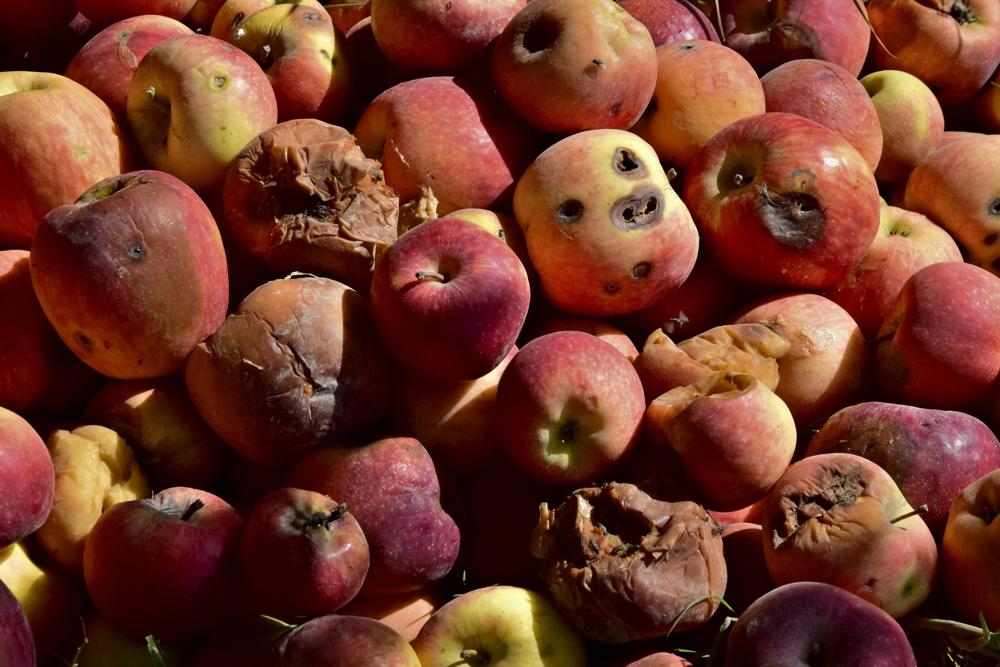
But the greater damage and danger is likely to Pakistan’s poor, with no margin to endure losses in income and food.
In Dasht, a remote district of Baluchistan province, hundreds of orchard owners worry about their future after losing crops of grapes, apples and other fruits. In parts of Baluchistan, piles upon piles of rotten apples can be seen in submerged areas.
Even before the floods, some 38 million Pakistanis, more than 16% of the population, were living in moderate or severe food insecurity, meaning they were uncertain about being able to obtain food or at times have outright gone without eating, according to the World Health Organization. Nearly 18% of children were acutely malnourished.
The blow to the food supply and incomes will tip those populations deeper into hunger, U.N. agencies have warned. The U.N.’s World Food Program has so far delivered food to 600,000 flood survivors.
Iqbal, the planning minister, said Sindh province is the country’s biggest producer of vegetables for domestic markets. Those crops were lost, along with families’ personal stores of grains for themselves and feed for their livestock.
“So, therefore we have a real food security challenge at hand,” he said.
On the ground in Sukkur, another hard-hit district neighboring Khairpur, the local agricultural director Rasool Bux Junejo fears the worst. Farmers won’t be able to grow wheat or other key crops like sunflowers and mustard.
“That will be a huge loss in the coming months. If you ask me as an agriculture worker, I foresee famine, God forbid,” he said. “We will be unable to provide food to our people.”

